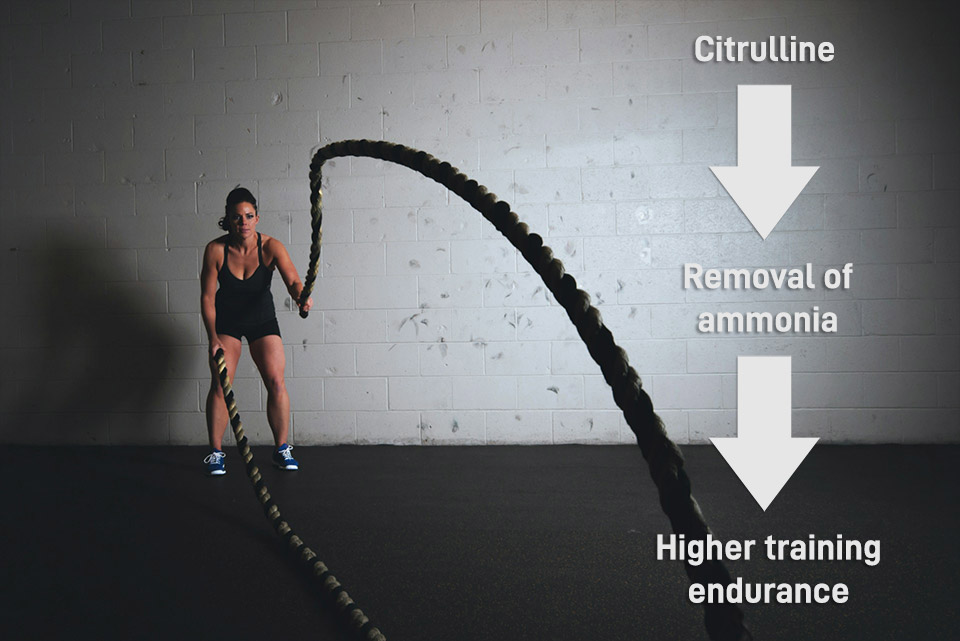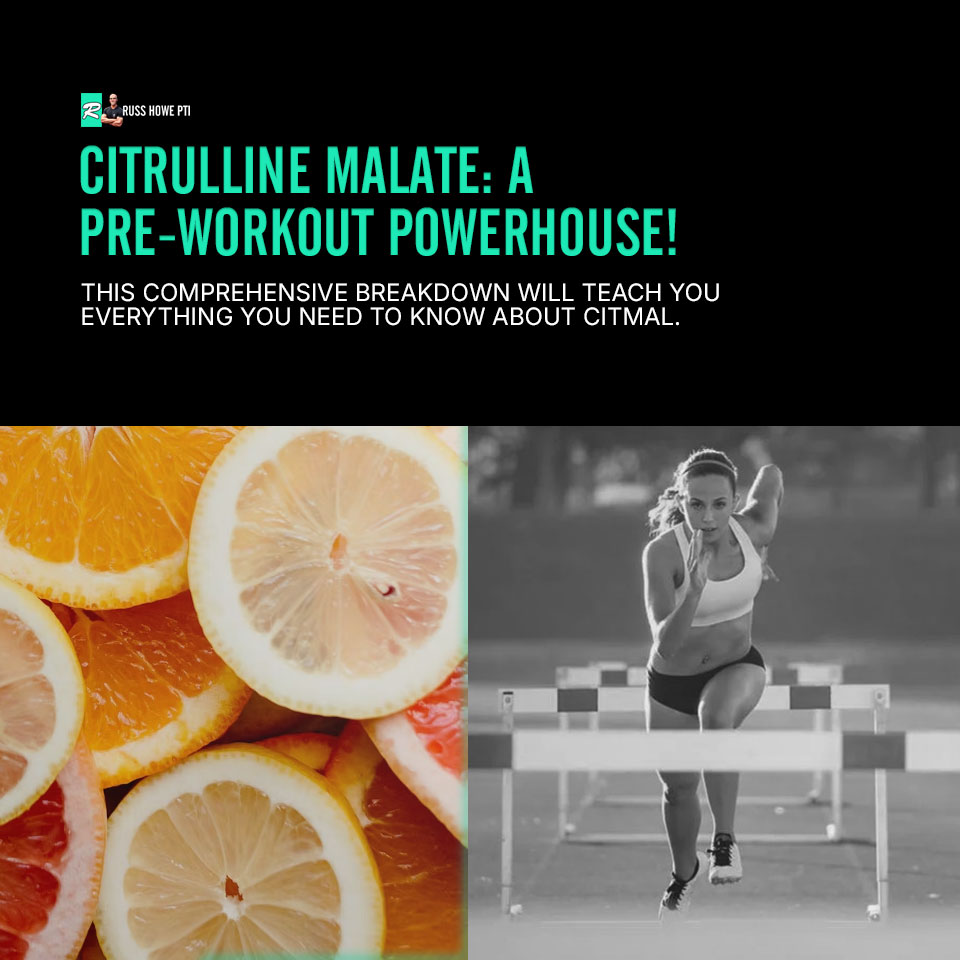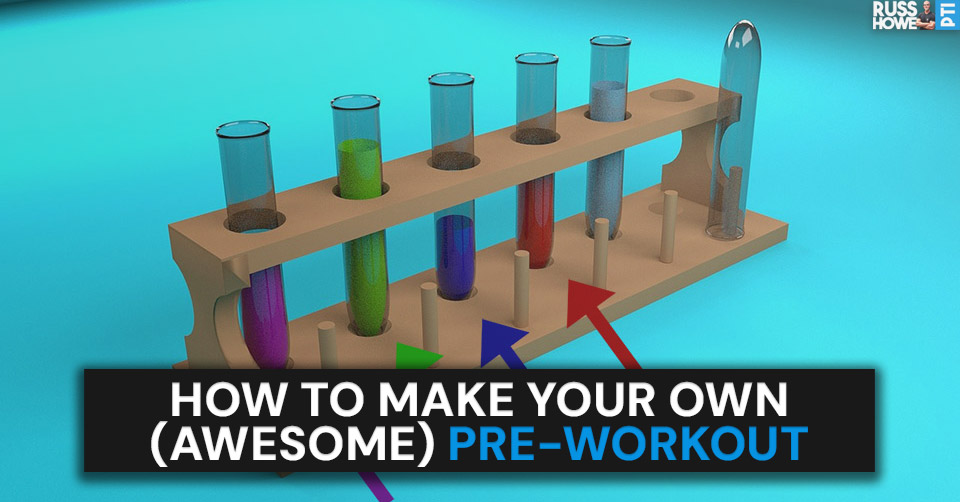Citrulline malate is the most important ingredient in your pre-workout supplement.

It rarely receives the credit it deserves (instead the limelight is undeservedly stolen by caffeine and/or the latest grey area exotic stimulant), but if your pre-workout is correctly dosed with this kick-ass ingredient you will notice a massive upturn in your results.
I’d like to explain how it works today, so we’ll cover it in lots of depth below.

What Is Citrulline Malate?
Citrulline is an amino acid.
It’s found in foods like watermelon, pumpkin, and cucumber.
If you’re trying to build muscle you’re probably aware of amino acids, as these little bad boys (which are found within protein-based foods) are often referred to as “the building blocks of muscle” due to their crucial role in muscle recovery.
The three most directly involved are leucine, isoleucine, and valine (a.k.a. the branched chain amino acids), but what most people don’t know is that there’s actually 21 amino acids in total – and they handle a wide variety of jobs, including regulating your hormones, producing dopamine, assisting your immune system, and much more.
The body is able to create some of these amino acids by itself (a.k.a. “non-essential” amino acids), but others must be obtained via our diet if we want to unlock the benefits they offer (a.k.a. “essential amino acids”). (1)
Here’s the full list:
| Essential Amino Acids | Non-Essential Amino Acids |
|---|---|
| Histidine | Alanine |
| Isoleucine | Arginine |
| Leucine | Aspartic Acid |
| Lysine | Asparagine |
| Methionine | Cysteine |
| Phenylalanine | Glutamine |
| Threonine | Glycine |
| Tryptophan | Glutamic Acid |
| Valine | Proline |
| Serine | |
| Selenocysteine |
The one we’re looking for here is a non-essential amino acid called arginine.
This is broken down into citrulline upon entering the body.
Interestigly, while our bodies can self-create enough of this amino acid for pure survival purposes, it appears that boosting intake even higher (via a supplement) can unlock significant fitness-related benefits. Meanwhile, the “malate” is a malic acid compound. Supplement companies attach this compound because it makes it easier for your body to absorb the cirulline.

The Training Benefits Of Citrulline Malate
Let’s look at what happens when we add CitMal to a pre-workout formula.
Before we go any further, I’d like to confirm that studies show this ingredient is completely safe, with zero negative side effects. (2)
I say this because when people see the insane benefits this ingredient offers, they’re often waiting for the “catch” – but there isn’t one!

- You’ll Have Superior Endurance
Citrulline eliminates ammonia from the body, enabling you to train significantly harder in the gym.
You see, ammonia is a waste product of intense exercise.
When ammonia levels build up too high it leads to fatigue, so citrulline’s ability to expel this ammonia build-up prolongs the amount of time we can spend in what would otherwise by an unbearable muscle burn (think; the last 5 reps of a 20 rep set). (3, 4)
So what does this look like inside the gym?
Well, back in 2010, a study published in the Journal of Strength and Conditioning Research found that weightlifters who regularly use citrulline malate (CitMal) could perform an average of 1 more rep on every set of their workout from the third set onwards. (5)
Holy fuck!
Imagine being able to get an extra rep on every single set of your workouts from this point on. The gains from this are potentially nuts, and they don’t take long to mount up. And to make things even better, the same researchers also found that the trainees who used citrulline ha a whopping 40% decrease in muscle soreness! Bosh!

- You’ll Get A Much Better Pump
It’s not uncommon to experience monstrous pumps when using citrulline malate.
This occurs because it activates the body’s nitric oxide pathway due to its effects on the urea cycle.
Your blood vessels will temporarily widen (a.k.a. vasodilation) which allows more fluid to enter your muscle cells (so you look like Superman!) and it also ramps up the delivery of key nutrients to your muscles as they work, which helps you to train harder and recover faster. (7, 8, 9)

- It’ll Improve Growth Hormone Levels… Sort Of!
This is often touted as a benefit of CitMal, but I advise you to ignore it.
Supplement manufacturers like to hype up the fact that citrulline can increase our body’s natural production of growth hormone and that this may lead to greater muscle growth (because growth hormone helps us to build muscle).
However, it simply isn’t true.
CitMal does improve our GH levels, and that’s by no means a bad thing, but it’s just a temporary boost during exercise – and definitely not enough to change our body’s overall levels of growth hormone production.

Why Don’t We Use Arginine?
This is precisely what bodybuilders used to do.
Considering citrulline gets converted into arginine upon entering the body, back in the early 2000s you’d see countless trainees heading down to their local supplement stores (remember those?!) and purchasing arginine supplements.
However, research shows us that this is inferior to using citrulline – indeed, a 2002 study from Germany confirmed that citrulline malate actually increases blood levels of arginine more than supplementing with arginine directly! It raised many eyebrows in the fitness world at the time, but the researchers were dead right, and their findings have since been re-confirmed in a UK study which showed that using CitMal led to a massive 50% improvement in blood levels of arginine over consuming arginine directly. (11, 12)
How the fuck?
Well, consider this a rare instance where the sequel is better than the original (like Aliens, or T2, or Big Momma’s House 2).
Arginine has a notoriously poor rate of absorption, with the vast majority being destroyed by the digestive tract. Heck, one study showed that as little as 1% of the consumed dose actually makes it all the way to your muscle cells! Citrulline does not have this issue because it skips the digestive tract and enters our body via the kidneys, where it’s converted into arginine and mainlined to your muscles. Studies show that around 80% of the consumed dose reaches the muscle cells. (13, 14)
Unfortunately, despite these findings, many supplement brands continue to include arginine in their pre-workout supplements because it’s much cheaper than CitMal, and they think the general public doesn’t know the difference between the two – but now you do!

The Difference Between Citrulline Malate And L-Citrulline
Now that we know about the benefits of citrulline, let’s take a look at the two most popular types of supplements.
- L-Citrulline
This is citrulline in its raw amino acid form.
- Citrulline Malate
This is citrulline with a malic acid compound attached to it.
Determining which one is better depends on the type of training you enjoy.
Most of the athletes I’ve worked with throughout my 22 years as a PT wanted to get stronger and more muscular, and would regularly hit the gym to smash the weights or run outdoor sprints. They would use citrulline malate, because it has been shown to yield significantly greater results versus standard l-citrulline when paired with this type of training.
The malic acid compound plays a key role in this. Found in apples, it appears to delay the onset of pain during rigorous exercise by impacting the body’s Krebs cycle. Its ability to help the body to produce ATP faster, it becomes the difference-maker as the intensity of our workouts increases (e.g. lifting weights or HIIT) versus just using l-citrulline alone. (15, 16)
So what kind of difference are we look at here?
Well, the bottom line is more reps per set. Back in 2015 a study published in the Journal of Strength and Conditioning Research showed that trainees who used 8 grams of citrulline malate prior to a leg workout (which consisted of leg extensions, hack squats, and leg press) recorded remarkable improvements to the number of reps they were able to perform to failure, and two years later we saw another study (this time with female trainees) achieve a similar outcome. (17, 18)

You’ll occasionally hear supplement brands claim that l-citrulline is superior to CitMal because it’s the amino acid in its “pure” form, but rest assured that’s marketing BS.
There are a handful of studies which suggest that l-citrulline may have the upper hand when it comes to cardiovascular training, but the research is a “mixed bag” at best. For example, a 2015 study from researchers at the University of Scranton showed that trainees who consumed 6 grams of l-citrulline prior to a workout (which consisted of heavy bench press to failure followed by running on a treadmill) saw no performance improvements at all! (19, 20, 21)
The research surrounding citrulline malate is much more conclusive.

What Is The Recommended Dose?
This depends which type of citrulline you’re using.
- Citrulline Malate = 6-10g/day
- L-Citrulline = 4-7g/day
This should be consumed 20-30 minutes before exercise, so ideally you’d just grab a pre-workout which can give you this dose alongside several other proven pre-workout ingredients like beta-alanine, betaine, caffeine, and creatine. You’ll see even more improvements if you also take a folic acid supplement, because this will synthesize the enzyme BH4, setting the stage for CitMal to utilize the nitric oxide pathway even more efficiently. (5, 17, 18, 22)
Now you might be wondering why the recommended dose of l-citrulline is considerably smaller than that of CitMal? This is because CitMal has two ingredients (l-citrulline and a malic acid compound) which are combined in a 2:1 ratio, whereas l-citrulline does not. (19)
See below:
| Dose | Ingredient #1 | Ingredient #2 |
|---|---|---|
| 10g CitMal | 6.66g l-citrulline | 3.34g malic acid |
| 7g L-Citrulline | 7g l-citrulline | n/a |
I hope you’ve enjoyed finding out about the training benefits of citrulline malate today. If you’ve got any questions which I haven’t already answered, feel free to drop them in the comment section and I’ll take a look at them.


Further Reading:
If you enjoyed this blog, then you’ll probably also like reading these.
>> How To Make Your Own Pre-Workout From Scratch
>> Busting All The Biggest Creatine Myths!
>> Russ’ Guide To Supplements
References:
- Reeds P. J., et al. Dispensable and Indispensable Amino Acids for Humans. J Nutr (2000).
- Curis E., et. al. Citrulline and the gut. Curr Op Clin Nutr Metab Care (2007).
- Eriksson L. S., et al. Ammonia metabolism during exercise in man. Clinical Physiology (Oxford, England). (1985)
- Mutch B. J., et al. Ammonia metabolism in exercise and fatigue: a review. Med Sci Sports Exerc (1983).
- Pérez-Guisado J., et al. Citrulline malate enhances athletic anaerobic performance and relieves muscle soreness. J Strength Cond Res (2010).
- West D. W., et al. Associations of exercise-induced hormone profiles and gains in strength and hypertrophy in a large cohort after weight training. Eur J Appl Physiol (2012).
- Alvares T. S., et al. Acute l-arginine supplementation increases muscle blood volume but not strength performance. Appl Physiol Nutr Metab (2012).
- Ochiai M., et al. Short-term effects of L-citrulline supplementation on arterial stiffness in middle-aged men. Int J Cardiol (2012).
- Morita M., et al. Effects of Oral L-Citrulline Supplementation on Lipoprotein Oxidation and Endothelial Dysfunction in Humans with Vasospastic Angina. Immunol Endocr Metab Agents Med Chem (2013).
- West D. W., et al. Associations of exercise-induced hormone profiles and gains in strength and hypertrophy in a large cohort after weight training. Eur J Appl Physiol (2012).
- Kuhn K. P., et al. Oral citrulline effectively elevates plasma arginine levels for 24 hours in normal volunteers. Circulation (2002).
- Schwedhelm E., et al. Pharmacokinetic and pharmacodynamic properties of oral L-citrulline and L-arginine: impact on nitric oxide metabolism. British Journal of Clinical Pharmacology (2008).
- Castillo L., et al. Splanchnic metabolism of dietary arginine in relation to nitric oxide synthesis in normal adult man. Proc Natl Acad Sci USA (1993).
- Sureda A., et al. Arginine and citrulline supplementation in sports and exercise: ergogenic nutrients? Med Sport Sci (2012).
- Werbach M. Nutritional strategies for treating chronic fatigue syndrome. Alternative Medicine Review (2000).
- Schroeder M. A., et al. Real-time assessment of Krebs cycle metabolism using hyperpolarized 13C magnetic resonance spectroscopy. The FASEB Journal (2009).
- Wax B., et al. Effects of supplemental citrulline malate ingestion during repeated bouts of lower-body exercise in advanced weightlifters. J Strength Cond Res (2015).
- Glenn J. M., et al. Acute citrulline malate supplementation improves upper- and lower-body submaximal weightlifting exercise performance in resistance-trained females. Eur Journal Nutr (2017).
- Suzuki T., et al. Oral L-citrulline supplementation enhances cycling time trial performance in healthy trained men: Double-blind randomized placebo-controlled 2-way crossover study. J Int Soc Sports Nutr (2016).
- Bailey, S. J., et al. l-Citrulline supplementation improves O2 uptake kinetics and high-intensity exercise performance in humans. J Appl Physiol (2015).
- Cutrufello P. T., et al. The effect of l-citrulline and watermelon juice supplementation on anaerobic and aerobic exercise performance. J Sports Sci (2015).
- Crabtree MJ, et al. Dihydrofolate reductase protects endothelial nitric oxide synthase from uncoupling in tetrahydrobiopterin deficiency. Free Radical Biology & Medicine (2011).





Leave a Reply